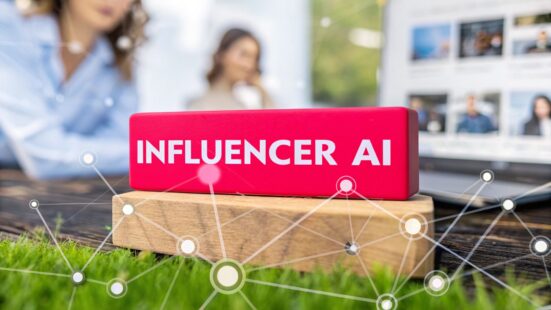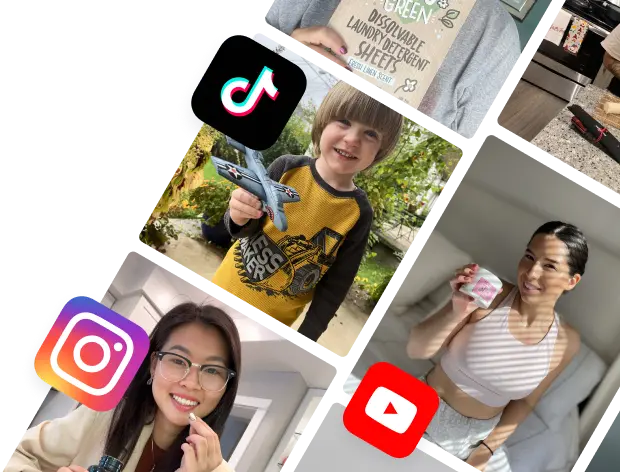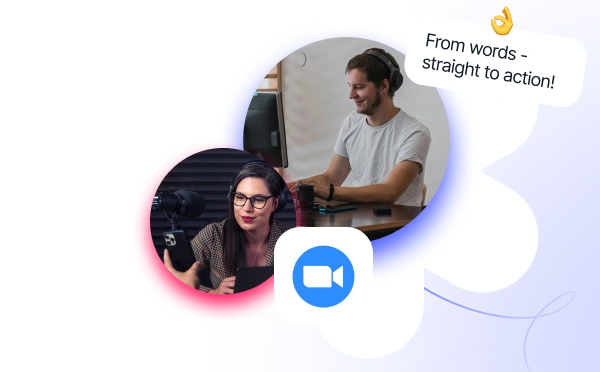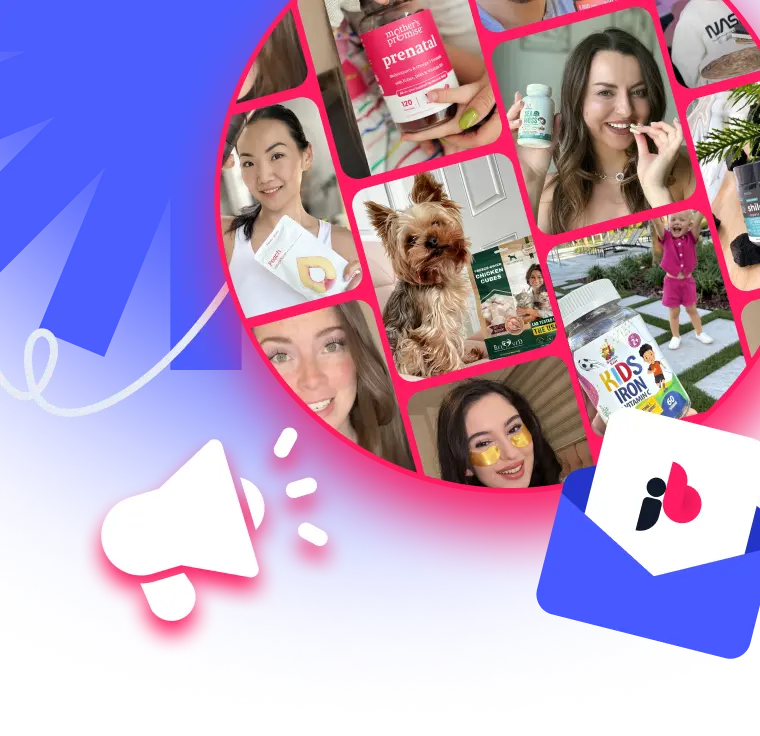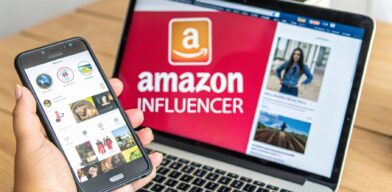 Influencer Program Amazon: Your Ultimate Guide to Success
Influencer Program Amazon: Your Ultimate Guide to Success
Let's be honest, the term Influencer AI probably sounds like another piece of marketing jargon. But in reality, it’s just the application of artificial intelligence and machine learning to make influencer marketing campaigns smarter, faster, and way more effective.
Think of it as the engine that powers the modern influencer marketing machine. It helps automate and improve all the tedious stuff—like finding the right creators, checking if their audience is real, and even predicting how well a campaign will perform before you spend a dime.
Table of Contents
The New Reality of Influencer Marketing
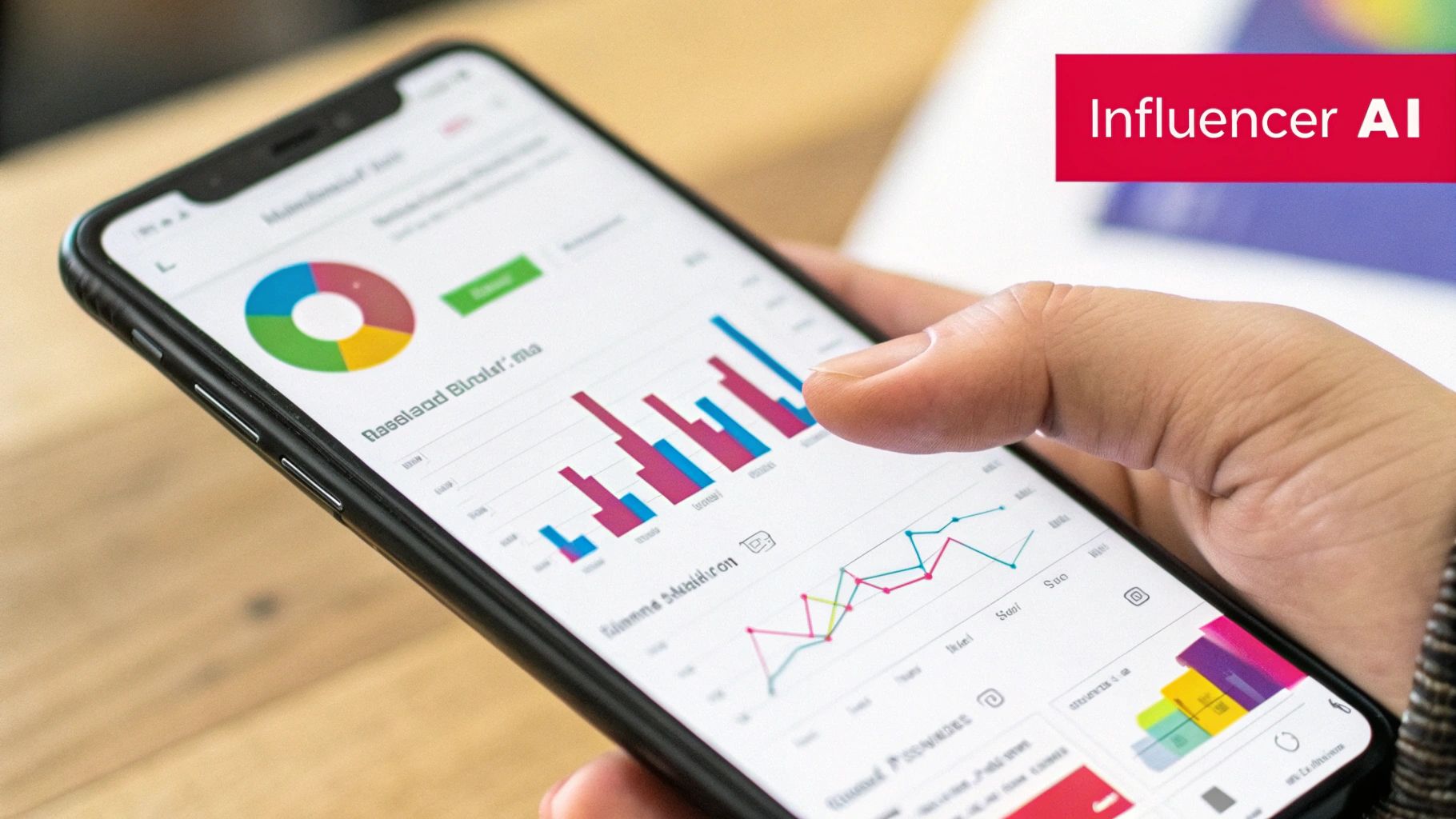
Welcome to the new era of creator partnerships, where data, not just gut feelings, is what separates the winning campaigns from the ones that fall flat. Influencer AI is no longer a futuristic concept; it's rapidly becoming the standard toolkit for any serious brand. The days of endlessly scrolling through social media, hoping to stumble upon the perfect partner, are numbered.
This whole shift is a direct answer to the industry's biggest headaches. For years, marketers have been bogged down by mind-numbing manual searches, battling fake engagement from bots, and struggling to prove a real return on investment (ROI). AI was practically built to tackle these exact problems.
A great way to think about influencer AI is as a super-powered analyst for your team. It can sift through millions of data points in seconds—something no human could ever do—to hand you clear, actionable insights for building better campaigns.
This isn't about replacing human marketers. It’s about giving them an upgrade. When algorithms handle the heavy data crunching, your team is free to focus on what people do best: building genuine relationships and cooking up brilliant creative strategies. Adopting AI isn't just a trend; it's becoming essential for anyone who wants to grow sustainably.
Why This Matters for Your Brand
So, what does this actually mean for you? Bringing AI into your workflow directly confronts the stubborn challenges that have held back influencer marketing for a long time. It adds a layer of precision and accountability that turns what often felt like guesswork into a measurable science.
Here’s a quick look at how influencer AI is completely changing the game:
- Fighting Fraud: AI algorithms are trained to spot the red flags instantly—from fake followers and bot comments to other shady tactics that inflate metrics and drain your budget.
- Guaranteeing Authenticity: It goes way beyond just looking at follower counts. AI dives deep into a creator's content, tone, and audience demographics to make sure there's a true, authentic match with your brand's values.
- Proving Real ROI: AI-powered platforms don't get distracted by vanity metrics like likes and views. They use predictive analytics to forecast campaign results and can directly attribute sales to specific creators, finally showing you the real financial impact.
The market growth tells the same story. The influencer marketing industry is on track to hit a global market size of $32.55 billion in 2025. A huge majority—over 80% of marketers—already consider it an effective strategy, and 66.4% are seeing better results specifically because of AI tools. You can dig into more data on AI's impact in influencer marketing to see the trend for yourself.
To truly appreciate the shift, it helps to see the old way of doing things side-by-side with the new, AI-driven approach.
Manual vs. AI-Driven Influencer Marketing
| Task | Manual Approach (Traditional) | AI-Powered Approach (Modern) |
|---|---|---|
| Creator Discovery | Hours of manual searching on social media feeds and keyword-based platform searches. | Instantly surfaces best-fit creators based on deep analysis of performance, audience, and content. |
| Vetting & Fraud | Relies on gut feelings and manually checking a few posts for suspicious activity. Often misses sophisticated bots. | Automatically scans profiles for fake followers, engagement pods, and suspicious growth patterns. |
| Audience Analysis | Limited to basic demographic data provided by the platform (if available). | Provides in-depth audience insights: psychographics, interests, brand affinity, and geographic spread. |
| Campaign ROI | Difficult to track beyond vanity metrics; relies heavily on discount codes or UTM links. | Predicts campaign outcomes (reach, engagement, sales) and provides clear attribution reporting. |
| Content Review | Requires manually checking every piece of content to ensure it meets brand guidelines. | Can auto-scan content for brand safety, FTC compliance, and visual consistency. |
| Scalability | Extremely difficult. Managing more than a handful of creators is a full-time job. | Easily manages hundreds or thousands of creators simultaneously through automation. |
As you can see, the difference is stark. While the manual approach relies on intuition and a ton of grunt work, the AI-powered method brings data, efficiency, and predictability to the forefront, allowing brands to operate at a scale and with a level of certainty that was previously impossible.
So, how does Influencer AI actually work? To really get it, you need to peek under the hood.
Think of an influencer AI platform as your own personal data scientist, one that works 24/7 without needing a single coffee break. It sifts through astronomical amounts of information—we're talking millions of creator profiles, posts, and audience comments—to find gems a human team could never unearth manually. This isn't some kind of marketing magic; it's just smart technology working in concert.
The whole system is built on a few key AI disciplines. These engines analyze everything from the specific words a creator uses to the subtle vibes in their photos. The goal is to build a complete, data-backed profile of their true influence and brand fit. It’s this deep dive that really separates modern platforms from the simple search tools of the past.
The Core Technological Engines
Three main types of AI are the real workhorses behind the scenes. Each one has a specific, crucial job to do when analyzing an influencer's digital footprint.
Natural Language Processing (NLP): This is the part of the AI that understands human language. NLP scans captions, comments, and post descriptions to figure out context, emotion, and sentiment. For instance, it can tell if an influencer talking about "sustainability" is genuinely passionate or just hopping on a trend.
Computer Vision: This is the AI's set of "eyes." It analyzes all the visual stuff in photos and videos, identifying objects, aesthetics, logos, and even the overall mood. If you need creators who feature rugged, adventurous outdoor shots but without your competitor’s logo anywhere in sight, computer vision makes that search happen in seconds.
Predictive Analytics: This is where the AI puts on its strategy hat. By crunching historical data from thousands of past campaigns, predictive models can forecast how well an influencer might perform for you. It can estimate things like reach, engagement rates, and even potential sales lift before you spend a single dollar.
Think of it like putting together a puzzle. NLP gives you the context from the words, computer vision provides the visual pieces, and predictive analytics shows you what the finished picture will likely look like. Together, they create a full, clear view.
This infographic breaks down exactly what features these technologies power.
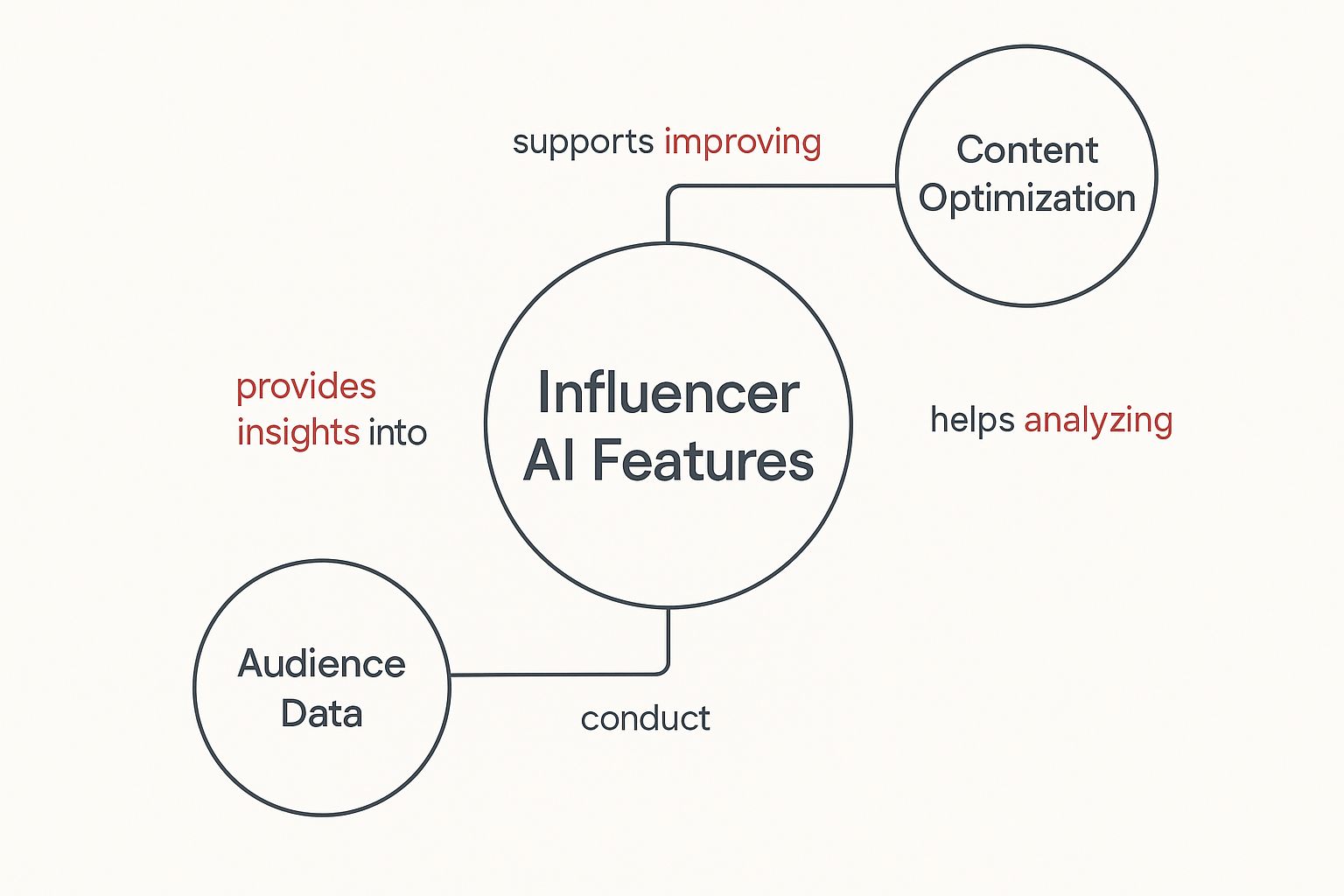
As you can see, these core technologies fuel the three pillars of a solid influencer strategy: deep audience insights, smarter content analysis, and performance metrics you can actually trust.
From Raw Data to Actionable Insights
So what does this look like in the real world?
Let's say you're a skincare brand launching a new vegan serum. The old way of finding influencers would be a slow, painful slog through Instagram, filled with a ton of guesswork. An influencer AI platform flips that process on its head.
First, you tell the platform what you want to achieve. You need creators whose audiences care about "clean beauty" and "vegan lifestyle" and have shown interest in similar products before.
The AI immediately starts scanning its massive index of creators. The NLP engine flags influencers who consistently use authentic, positive language around these topics, while filtering out those who just mention them superficially.
At the same time, computer vision gets to work on the visuals. It identifies creators whose aesthetic matches your brand—maybe bright, clean, and minimalist—and makes sure their photos are high-quality and don't feature competing products.
Next, the platform goes deep on audience analytics. It verifies that a creator's followers are real people in your target markets with genuine interests in skincare, not just a bunch of bots. It might find an influencer who looks perfect on the surface, only to discover their engagement is suspiciously low, saving you from a bad investment.
Finally, the predictive analytics models kick in. Based on that creator's past performance with other sponsored posts, the AI projects the likely engagement rate and reach for your campaign. It might even suggest the best format—Reel, Story, or static image—to get the most bang for your buck. This data-first approach turns a risky guess into a calculated, strategic move, massively boosting your campaign's chance of success right from the start.
Putting Influencer AI to Work in Your Campaigns
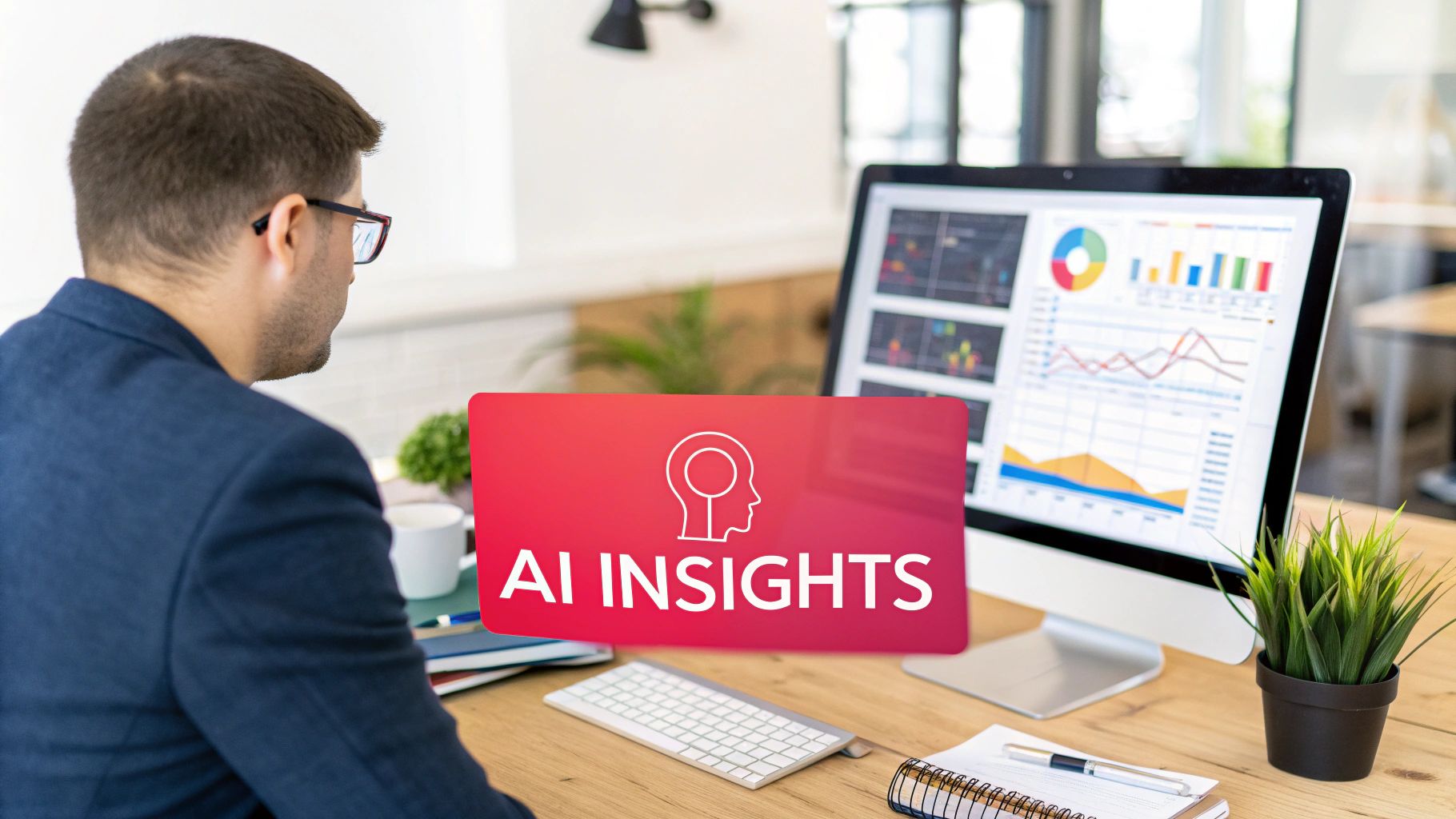
Knowing the theory behind Influencer AI is one thing, but seeing it in action is where the magic really happens. This technology isn't just a single feature; it’s a full-blown system that elevates every single stage of your influencer marketing campaign. From the first spark of an idea to the final ROI report, AI injects the data-driven precision you need to get real results.
Think of it as transforming your campaign workflow. It takes you from a series of disconnected, manual tasks to a single, smart, and interconnected process. Instead of flying blind with guesswork and gut feelings, you get a strategic partner that informs your decisions, handles the grunt work, and uncovers opportunities you would’ve otherwise missed.
Let's break down how Influencer AI changes the game at each phase of a campaign.
Supercharging Creator Discovery and Vetting
The first, and arguably most critical, step is finding the right partners. We’ve all been there—endless scrolling through hashtags and competitor feeds. It's not just slow; it’s often a superficial way to find talent. Influencer AI completely flips this script.
Instead of just matching basic keywords, AI platforms dig deep into a creator's digital DNA. They analyze years of content to understand a creator’s genuine passions, communication style, and unique aesthetic. This allows you to find hyper-relevant partners based on complex criteria that go way beyond simple follower counts or industry tags.
Key Takeaway: Influencer AI gets past the vanity metrics. It uncovers creators whose audience psychographics, brand affinities, and content values are a perfect match for your campaign goals, setting you up for a more authentic and impactful partnership right from the start.
Once you have a list of potential creators, the vetting process kicks in. This is where AI truly shines by acting as your built-in fraud detector. Its algorithms are trained on massive datasets to spot the red flags of inauthenticity that are almost impossible for the human eye to catch.
- Fake Follower Detection: The AI scans follower accounts for bot-like behavior—things like empty profiles, strange activity patterns, and generic, repetitive comments.
- Engagement Audits: It knows the difference between real interactions and low-quality engagement from pods or bots, giving you a true measure of a creator's actual influence.
- Historical Performance Analysis: The platform reviews how a creator's past sponsored content performed, flagging anyone with a track record of underdelivering.
This automated guard dog saves brands from wasting thousands on creators with puffed-up metrics, ensuring every dollar is invested in authentic reach.
Optimizing Campaign Management and Content
After you’ve locked in the perfect partners, Influencer AI keeps adding value during the active campaign management phase. It acts like a smart assistant, helping to streamline communication, content approvals, and compliance to keep everything running like a well-oiled machine.
For example, some advanced platforms can use AI to look at your creative brief and a creator’s past posts to suggest personalized content ideas. It might recommend a specific video format or a call-to-action that has historically crushed it with that creator’s audience, seriously upping your odds of success.
This isn’t some future trend; it’s happening right now. A recent survey from January 2025 showed that 60.4% of marketing professionals are already using AI for their influencer marketing. While 38% use it on a limited basis, another 22.4% are using it extensively, which points to a huge industry shift toward smarter workflows. You can dive deeper into the rise of AI in marketing workflows to see how quickly it's being adopted. This shift proves AI is quickly becoming a non-negotiable part of modern campaign management.
Measuring What Truly Matters
Perhaps the biggest impact of Influencer AI is in measurement and ROI attribution. For far too long, marketers have been stuck with vanity metrics like likes and comments, making it a nightmare to prove the real business impact of their campaigns.
AI-powered measurement tools change all of that by finally connecting campaign activities to bottom-line results.
- Predictive ROI: Before you even launch, AI models can forecast potential outcomes like reach, engagement, and even sales lift based on historical data. This helps you set realistic goals and put your budget where it will work hardest.
- Sales Attribution: By hooking into e-commerce platforms, the AI can track customer journeys from an influencer’s post all the way to a final purchase. This gives you crystal-clear sales attribution for each creator.
- Content Performance Analysis: The system breaks down every piece of content to identify which formats, visuals, and messages drove the most engagement and conversions, giving you invaluable insights for your next campaign.
At the end of the day, Influencer AI gives you a clear, 360-degree view of what’s working and what’s not. It moves past fuzzy metrics to deliver concrete proof of performance, finally allowing marketers to show the real, tangible value their influencer programs bring to the business.
Alright, let's step beyond using AI to just fine-tune campaigns with human creators and talk about one of its most fascinating applications: creating brand personalities completely from scratch.
This is the world of virtual influencers—AI-powered personas that are rapidly becoming sophisticated, powerful assets for brands.
We’re not talking about simple digital cartoons here. Pioneers in this space, like Lil Miquela and Lu do Magalu, are fully realized characters. They have detailed backstories, unique personalities, and followings that number in the millions. For a brand, they represent the ultimate always-on ambassador, offering a degree of predictability and brand safety that’s just not possible with human talent.
And yes, the financial world is definitely paying attention. This niche but explosive corner of the creator economy was valued at a staggering USD 6.06 billion in 2024. Projections have it soaring to USD 45.88 billion by 2030, which tells you everything you need to know about its growing role in modern marketing. You can dig into more of the data behind this incredible growth in the latest market report on virtual influencers.
The Unique Advantages of Digital Stars
So, why would a brand ever choose a computer-generated influencer over a real person? It all comes down to a unique mix of control, availability, and pure creative freedom. Virtual influencers solve some of the most common headaches in traditional creator marketing.
First and foremost is total message control. A virtual influencer will never go off-script, get tangled up in a public scandal, or post something that clashes with your brand’s values. This massively de-risks the entire partnership, giving marketers the peace of mind that their brand image is locked down and protected.
Then there’s their round-the-clock availability. These digital stars don’t need sleep, vacations, or coffee breaks. They can engage with a global audience across every time zone, show up at virtual events at a moment's notice, and churn out content at a scale that would burn out any human creator.
- Creative Freedom: Want your influencer to pose on Mars? Or maybe wear a dress literally made of fire? With virtual personas, your imagination is the only ceiling. This unlocks some truly mind-blowing storytelling possibilities.
- Cost-Effectiveness Over Time: While the initial setup can be an investment, the long-term cost of a virtual influencer can be much lower than retaining A-list human talent. Say goodbye to travel fees, complex contract negotiations, and unexpected expenses.
- Native Digital Integration: These influencers were born for digital environments. They fit seamlessly into video games, augmented reality apps, and the metaverse, creating native ad experiences that feel completely natural to the user.
Imagine a fashion brand launching its new collection inside a virtual world. An AI influencer could host the event, model the digital clothing line, and interact with every guest in real-time. It’s a deeply immersive experience that feels futuristic yet completely intuitive.
Navigating the Challenges and Ethics
Of course, the rise of AI personas isn't without its challenges and big ethical questions. Brands wading into these waters need to be careful to maintain audience trust and sidestep pitfalls that could sink their entire campaign.
The biggest hurdle is the "uncanny valley"—that creepy, unsettled feeling people get when a digital human looks almost real, but not quite. If a virtual influencer comes off as eerie or fake, it can spark a negative reaction and seriously damage brand perception. The design and personality must be handled with incredible skill to feel relatable and appealing, not unsettling.
Another massive consideration is audience transparency. It is absolutely critical for brands to be upfront about the fact that their influencer is an AI. Trying to deceive an audience is a surefire way to get hit with a severe backlash and lose trust that’s incredibly difficult to win back. The most successful virtual influencers, like Lil Miquela, lean into their digital nature—it becomes part of their unique charm.
Finally, there’s the big question of authenticity. Can a programmed personality truly build a genuine connection with an audience? While they can't share lived human experiences, they can be built with consistent values and a compelling narrative that resonates deeply with followers. It’s about building a different, but still powerful, form of community by crafting a persona that, while artificial, feels true to itself.
How to Choose the Right Influencer AI Platform
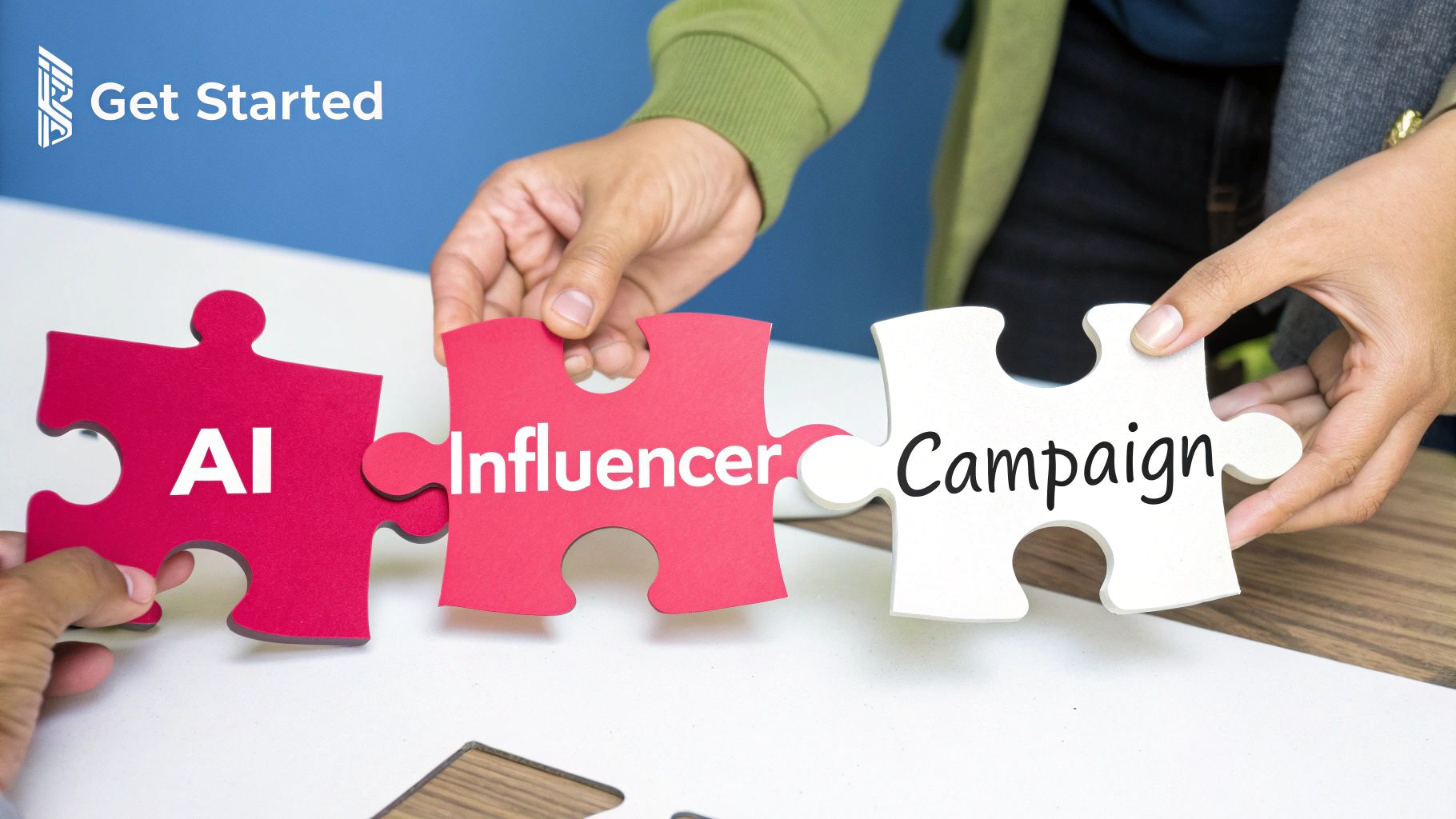
With a flood of new tools hitting the market, picking the right influencer AI platform can feel overwhelming. They all promise the world, but the truth is, the best tool is simply the one that fits your brand’s unique needs, budget, and goals. If you choose poorly, you're looking at wasted money and frustratingly weak results.
Instead of getting hypnotized by a flashy list of features, it’s much smarter to approach this with a clear evaluation plan. Think of it like test-driving a car—you need to look under the hood and see if the performance actually matches what you need for your daily drive. It all comes down to asking the right questions and knowing what to prioritize for your campaigns.
Assess the Quality and Scope of Data
The entire value of an influencer AI platform is built on its data. Period. If that data is shallow, stale, or just plain wrong, even the slickest dashboard is completely useless. This is the first and most important thing you need to investigate.
When you're looking at a platform, ask some direct questions about where their data comes from and how often it's refreshed. How many creators are they tracking? How frequently is audience demographic and performance info updated? A platform pulling fresh data every day is worlds more reliable than one that only updates its index once a month.
Critical Insight: The depth of data is just as crucial as its freshness. A top-tier platform won’t just give you basic demographics like age and location; it will offer rich psychographic details—like audience interests, brand affinities, and shared values.
Evaluate Predictive Accuracy and Fraud Detection
A platform's big promise is to deliver better results. This hinges on two things: its ability to accurately predict campaign performance and its skill at sniffing out fraud. Don’t just take the sales pitch at face value; ask for proof.
Request case studies or real-world examples showing how their predictive models performed for brands like yours. Any company worth its salt should be able to share anonymized data on their forecast accuracy. In the same vein, you need to dig into their fraud detection.
- What specific kinds of fraud can it spot? (e.g., fake followers, comment pods, engagement bots)
- How does it tell the difference between a genuine viral spike and sketchy, inorganic growth?
- Can it give you a clear "audience health score" for any given influencer?
A solid influencer AI system should be your first line of defense against burning cash on creators with phony metrics.
Prioritize Usability and Integration
The most powerful tool on the planet is useless if your team finds it too confusing to use. The user interface (UI) should feel natural, making it easy to set up campaigns, filter for creators, and pull reports without needing a week of training. Always schedule a live demo and make sure the people who will actually use the platform every day are on that call.
Beyond that, think about how the platform will plug into your existing marketing workflow. Does it offer integrations with your e-commerce platform (like Shopify), social media schedulers, or your main analytics dashboard? Seamless integrations save countless hours of manual data entry and make your whole process way more efficient. For instance, a platform like JoinBrands is designed specifically to bring all these workflows—from creator matching to content approval—into one unified place.
How to Actually Use Influencer AI in Your Strategy
Let's get one thing straight: bringing AI into your influencer marketing isn't about firing your team and letting the robots take over. Think of it more like giving your team a super-powered assistant. The AI can do the heavy lifting—sifting through mountains of data—while your people focus on what they do best: building real relationships and nailing your brand's voice. That’s where the magic happens, when machine-level precision meets human creativity.
The trick is to see the AI for what it is: a serious strategic advantage. It can scan millions of creator profiles to find that perfect hidden gem or predict campaign results with scary-good accuracy. What it can't do is understand the subtle cultural vibe that makes a brand partnership feel real and not just like another ad. That’s a human touch, and it’s non-negotiable.
It's like a pilot using autopilot. The tech handles the complex, data-heavy job of keeping the plane level and on course. But the pilot is always there, ready to take the controls, navigate a bit of turbulence, and stick the landing.
This "human-in-the-loop" approach is what keeps your campaigns from feeling stale or, worse, totally off-brand. It’s the best of both worlds.
Start Small with Pilot Campaigns
Diving headfirst into a full-blown AI integration is a recipe for disaster. Don't do it. Instead, dip your toes in with a small, focused pilot campaign. This gives you a safe space to test the waters, see what the tech can really do, and figure out how it fits into your current workflow without betting the entire marketing budget.
Pick one specific, measurable goal for your first go. Something simple. Maybe you want to find five new micro-influencers in a super-niche market. Or perhaps you want to test the platform's ROI prediction on a small product launch. A tight focus makes it way easier to tell if it's actually working.
Keep Feeding the Machine with Data
An influencer AI platform isn't a crock-pot—you can't just set it and forget it. These systems get smarter and more accurate the more you use them. So, after every campaign, you need to feed it your results. Tell it what worked, what bombed, which creators actually moved the needle, and what content got people talking.
This creates a feedback loop that trains the AI on what "success" means for your brand, not some generic company. Over time, its creator suggestions get sharper, its performance forecasts become more reliable, and its value to your team grows. And if you really want to level up, you can pair it with other tools. For instance, integrating AI-powered content creation platforms like Dalm can help you produce fresh, effective assets to keep your campaigns from getting repetitive.
At the end of the day, successfully using influencer AI comes down to your mindset. You have to start small, keep a human in charge, and commit to making the system smarter with your own data. Do that, and AI stops being just another shiny tool and becomes a real engine for your brand's growth.
Got Questions About Influencer AI? We’ve Got Answers.
It’s totally normal to have a few questions as influencer AI becomes a staple in every serious marketer’s playbook. It’s powerful stuff, but it definitely changes how we approach creator marketing. Let’s clear up some of the most common questions we hear from brands so you can start using these tools with confidence.
How Is Creator Data and Privacy Handled?
This is a big one, and for good reason. The short answer is: responsibly. Reputable influencer AI platforms aren’t snooping through private messages or anything confidential. They’re designed to analyze publicly available data—the stuff creators willingly share on their social profiles, like posts, captions, follower counts, and engagement stats.
The best platforms are built with a creator-first mindset. Their goal is to surface amazing partnership opportunities, not to dig into private lives.
Here’s a good way to think about it: An AI platform can browse every book on the public shelves of a library (public posts and data), but it doesn’t have a key to the librarian's private office (DMs or personal information). Creators typically give their consent when they onboard for a campaign, agreeing to specific terms before any collaboration begins.
Can Small Businesses Actually Afford These Tools?
Yes! And this is one of the best things about how this technology has grown. While the biggest, most complex enterprise platforms can come with a hefty price tag, the market has exploded with options for just about every budget.
Many influencer AI tools now run on a subscription (SaaS) model. This means you can find tiered pricing that makes them perfectly accessible for startups and small businesses. The real value comes from the sheer amount of time you save on manual research and the costly mistakes you avoid—like partnering with an influencer who has a ton of fake followers. When you factor that in, the ROI makes it a smart investment, even for lean teams.
Isn't This Just a Fancy Database?
That's a great question, and it gets to the heart of what makes these tools so different. A basic influencer database is like a digital phonebook—it’s just a static list of names and follower counts that you can filter. An influencer AI platform is more like having a team of expert analysts working for you around the clock.
Here’s how they stack up:
- Databases give you simple search filters based on keywords and follower numbers. They’re pretty one-dimensional.
- AI platforms deliver deep, actionable insights. We’re talking audience psychographics, fraud detection, content sentiment analysis, and even performance forecasts for your campaign.
A database helps you find a list of names. An AI platform helps you build a winning strategy.
How Will AI Shape the Future of the Creator Economy?
AI is poised to make the creator economy a more efficient and merit-based space. It’s already leveling the playing field, making it way easier for brands to discover talented micro-influencers who have incredibly engaged, niche audiences but might have been overlooked before.
Looking ahead, we'll see AI move beyond just discovery and measurement. It’ll start playing a bigger role in the creative side of things, like suggesting content ideas that are proven to resonate with a specific audience. We'll also see the continued rise of AI-generated virtual influencers, giving brands totally new ways to tell stories.
The future isn't about AI replacing human creators. It's about augmenting their creativity, leading to smarter partnerships and way more impactful campaigns for everyone involved.
Ready to stop guessing and start getting real results from your creator campaigns? JoinBrands connects you with over 250,000 creators and uses powerful AI to find your perfect match, streamline workflows, and accelerate your sales. Discover how JoinBrands can transform your influencer marketing today.
